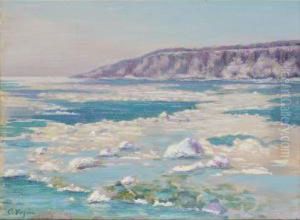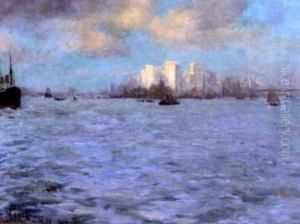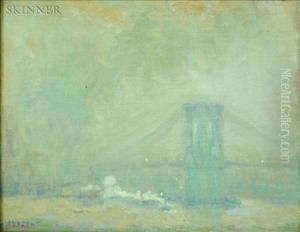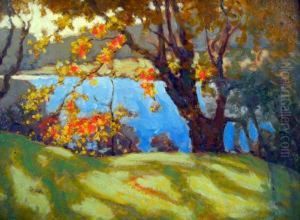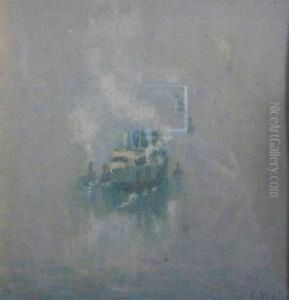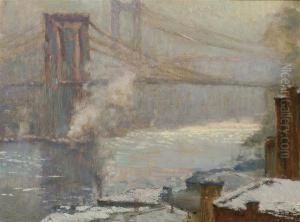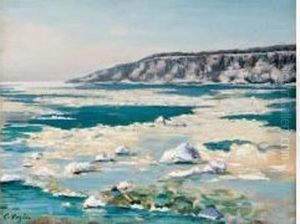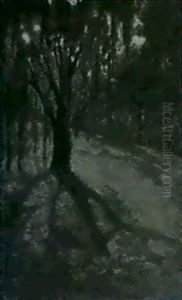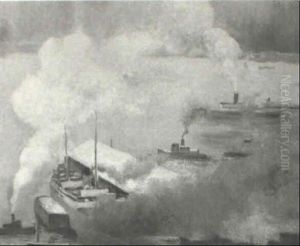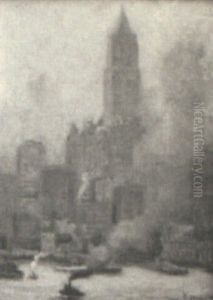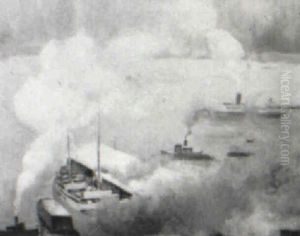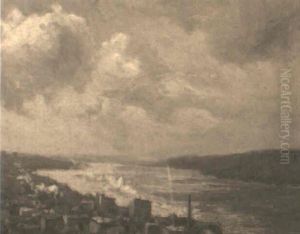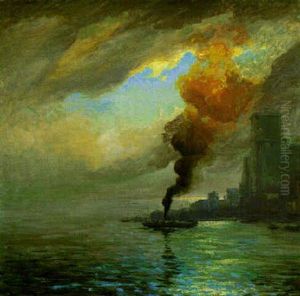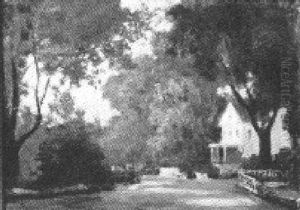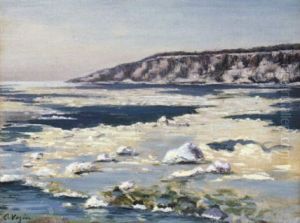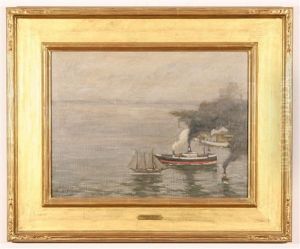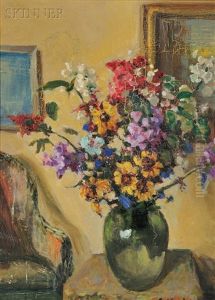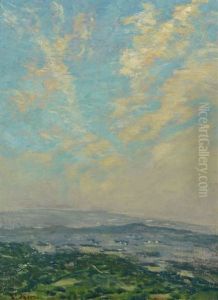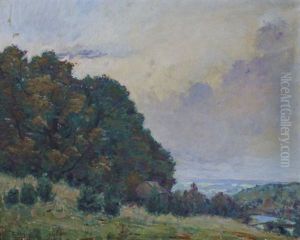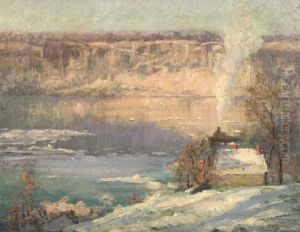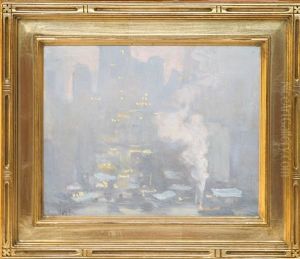Charles Vezin Paintings
Charles Vezin was an American impressionist painter known for his cityscapes and landscapes. Born in Philadelphia, Pennsylvania, in 1858, Vezin showed an early interest in the arts. However, information about his early life and education remains relatively sparse. It is known that he began his artistic career as a commercial artist, which was common for many artists at the time as a means to earn a living.
Vezin eventually transitioned to fine art, developing a style that was influenced by the Impressionist movement, which was gaining popularity during his lifetime. His works often featured urban scenes of New York City, where he had moved, capturing the bustling city life with a vibrant palette and loose brushwork that characterized the impressionist technique. He was particularly fascinated by the interplay of light and its effects on the city's architecture and waterways.
Throughout his career, Vezin traveled extensively, which influenced his art. He spent time in Europe, where he was able to study the works of the Impressionist masters firsthand. This exposure further refined his approach to color and composition. Upon returning to the United States, he continued to paint prolifically, exhibiting his work in various venues, including the prestigious National Academy of Design and the Pennsylvania Academy of the Fine Arts.
Later in his career, Vezin also explored the American landscape, venturing beyond the city to capture the serene beauty of the countryside. His landscape paintings, like his cityscapes, were imbued with a sense of atmosphere and mood, often emphasizing the times of day when the light was most dramatic.
Charles Vezin's contributions to American Impressionism were recognized in his time, and he was a member of several art organizations. He continued to paint until his later years, leaving behind a legacy of work that provides a luminous depiction of American life at the turn of the 20th century. Vezin passed away in 1942, leaving a body of work that continues to be appreciated for its vibrant depiction of both urban and rural America.
